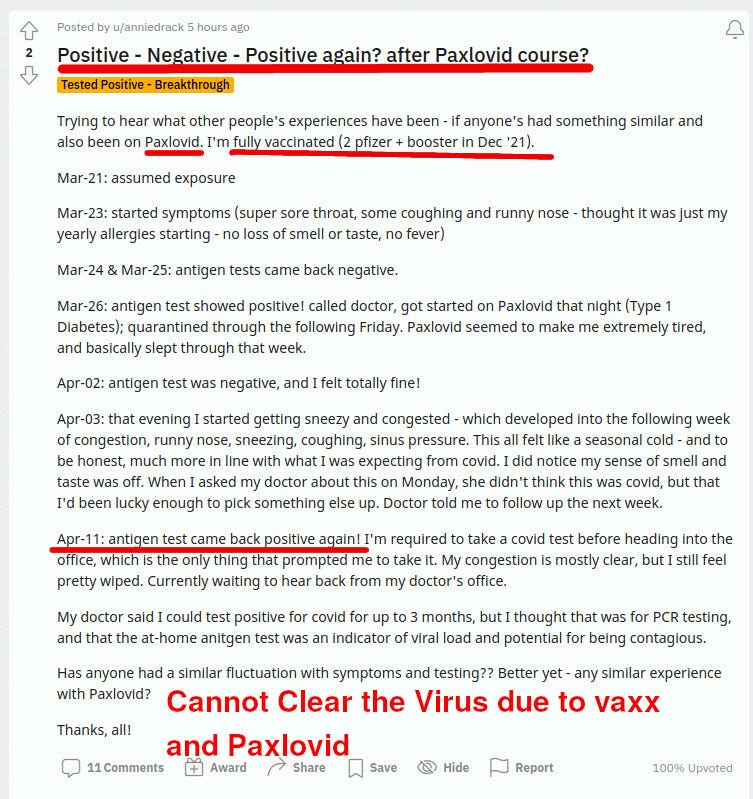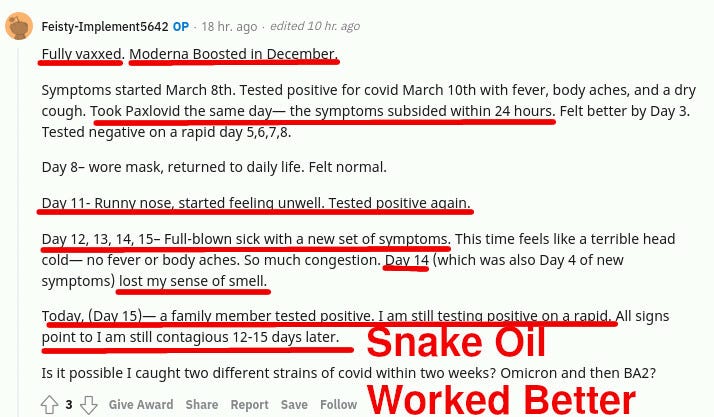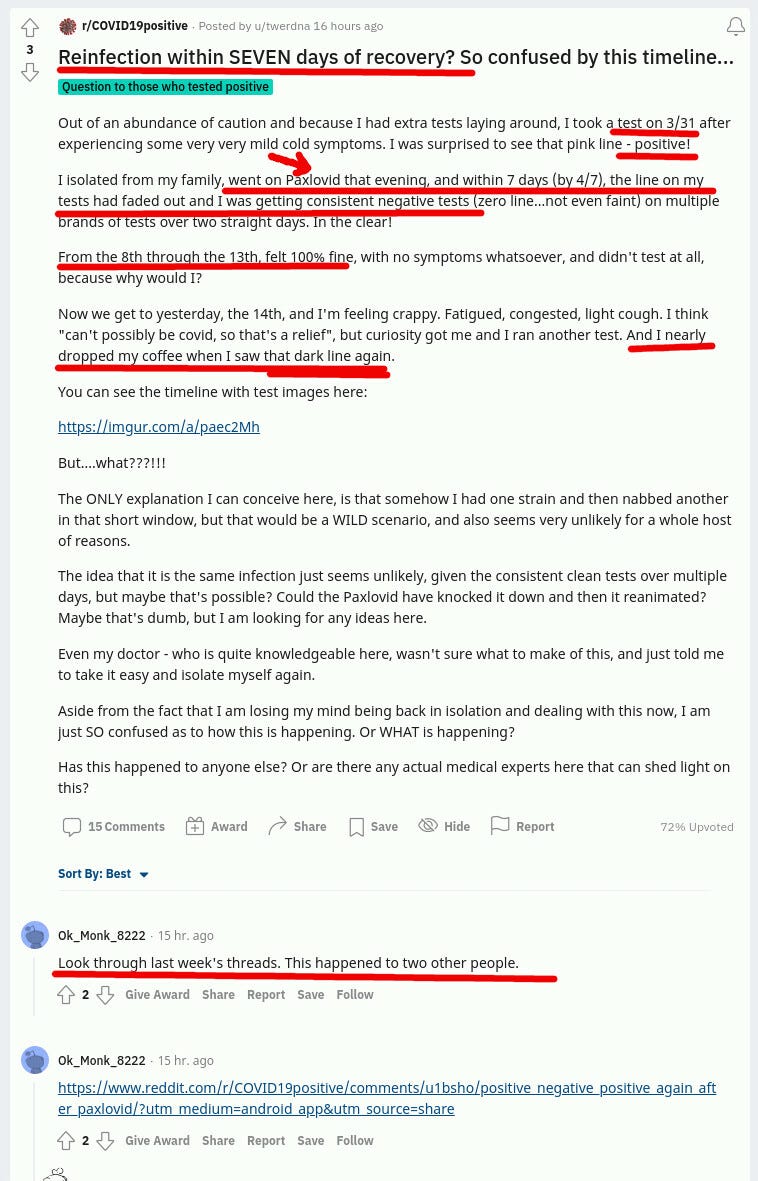Paxlovid, "Snake Oil" of the 21st Century?
Paxlovid Clears Symptoms, but does it Clear the Virus?
Paxlovid is a combination of a protease inhibitor Nirmatrelvir and a HIV medication Ritonavir. At $895, it is definitely going to be a moneymaker for Pfizer.
But how well does it work for the patients?
This is what we all heard:
The first study, that lasted for four weeks only, reported amazing success and “89% prevention of severe symptoms”. That first study was enough to get FDA to give Paxlovid a EUA.
Who cares that the subsequent results, that actually appeared before the FDA decision but after Pfizer submission, showed a much worse performance:
This is pretty typical for another famous Pfizer product, right? We all heard how it was “99% effective”, then “95%”, then “43%” etc — you know how it worked out.
Same with Paxlovid: first it was 89%, then 70%, failed to achieve sustained alleviation of symptoms, etc.
How does it work for actual people?
It turns out that Paxlovid reduces symptoms, and maybe reduces viral load at day 5, but at the same time it does not clear the virus! Not only that, but the patients cannot clear it for extended periods AFTER paxlovid administration is over:
In the reddit posts above, you can see a few redditors stumped about this and sharing what is happening to them, trying to make sense of what is happening.
Here are some Twitter posts:
A famous Twitter personality Eric Feigl-Ding and his friend are having a similar issue:
These people report stronger RAT test results — thicker lines — after taking Paxlovid. One reported infecting a family member around Day 15.
Just to remind everyone, we have “symptoms”, such as fever, because our immune system is working to counter the infection and kill off the pathogen.
Having no symptoms and no infection is a good thing. Having no symptoms and an ongoing, contagious Covid infection is a bad thing.
Does Paxlovid turn people into asymptomatic Covid superspreaders? It is a question that we cannot answer, and that need to be assessed and addressed by science. Will anyone care? I doubt, but I hope that someone important takes notice.
I was blocked by Twitter today, so please share this post with your friends.
Please go to the comments section and read the pinned comment by Brian Mowrey, where he explains the molecular mechanism for this happening. And let us know what YOU think!
Brian Mowrey
Brian Mowrey (whose comment is pinned in the comment section) wrote a very amazing theoretical article, explaining WHY the above is happening to the above redditors and Twitterers.
The gist of his theory is: Paxlovid is a 5-day molecular PAUSE button.














The biology for this is plausible at an elevator pitch level.
Binding to the nsp5 / 3C-Like protease just pauses the virus's work within cells. This occurs after the polyprotein is formed but before nsp5 has chopped it up into little parts (including more nsp5's). So by pausing matters here, it's just a matter of what has a higher half-life in the body/cells - the drug, or the RNA and un-processed polyproteins of the virus? Presumably the polyproteins will still be cleaved at a lower rate by endogenous proteases that are expressed (*edit, actually by auto-cleavage; revised version of the mechanism here https://unglossed.substack.com/p/unfinished-business). This releases fresh nsp5. Viral replication takes off a little bit behind of where it left off (minus some degraded RNA). So the drug has to be taken for longer (until all the RNA is broken down) or forever, who knows.
All antiviral treatments that attack the processes of viral replication are subject to these types of paradoxes, because viruses replicate using the same processes our cells use to do everyday work.
My caveats would be that I'm always a little skeptical that drugs actually do what they promise on a molecular level most times to begin with, and I haven't researched Paxlovid very much.
The theme of the week is...SNAKE PRODUCTS.